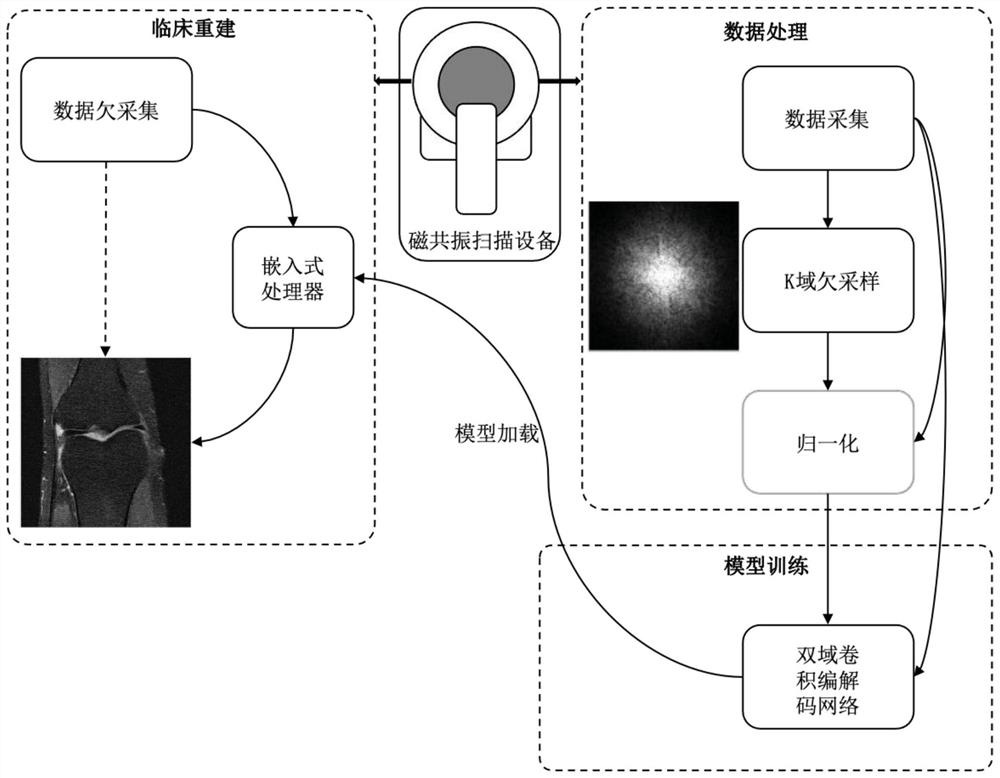Neural network magnetic resonance image reconstruction method based on double-domain alternating convolution
A magnetic resonance image and neural network technology, applied in the field of image processing, can solve problems such as large amount of calculation, artifacts in reconstructed images, discontinuous K-space data, etc., to achieve the effect of eliminating artifacts and improving reconstruction accuracy
- Summary
- Abstract
- Description
- Claims
- Application Information
AI Technical Summary
Problems solved by technology
Method used
Image
Examples
Embodiment Construction
[0032] Embodiments of the present invention are described in further detail below in conjunction with the accompanying drawings:
[0033] A neural network MRI image reconstruction method based on dual-domain alternating convolution, such as figure 1 shown, including the following steps:
[0034]Step 1. Use the magnetic scanning equipment to scan and obtain the K-space data set;
[0035] The specific method of the step 1 is: use the existing magnetic resonance scanning equipment to scan the sample to obtain K-space information, export and save it losslessly, and save the data in the .h5 file in plural form.
[0036] Step 2. Use a mask to block the K-space data obtained in Step 1, and zero-fill the blocked part, thereby generating under-sampled K-space data;
[0037] The specific method of the step 2 is: use the mask to adaptively adjust the mask when masking the K-space data obtained in the step 1, so as to ensure that the K-space information after occlusion contains enough m...
PUM
 Login to View More
Login to View More Abstract
Description
Claims
Application Information
 Login to View More
Login to View More - R&D
- Intellectual Property
- Life Sciences
- Materials
- Tech Scout
- Unparalleled Data Quality
- Higher Quality Content
- 60% Fewer Hallucinations
Browse by: Latest US Patents, China's latest patents, Technical Efficacy Thesaurus, Application Domain, Technology Topic, Popular Technical Reports.
© 2025 PatSnap. All rights reserved.Legal|Privacy policy|Modern Slavery Act Transparency Statement|Sitemap|About US| Contact US: help@patsnap.com



